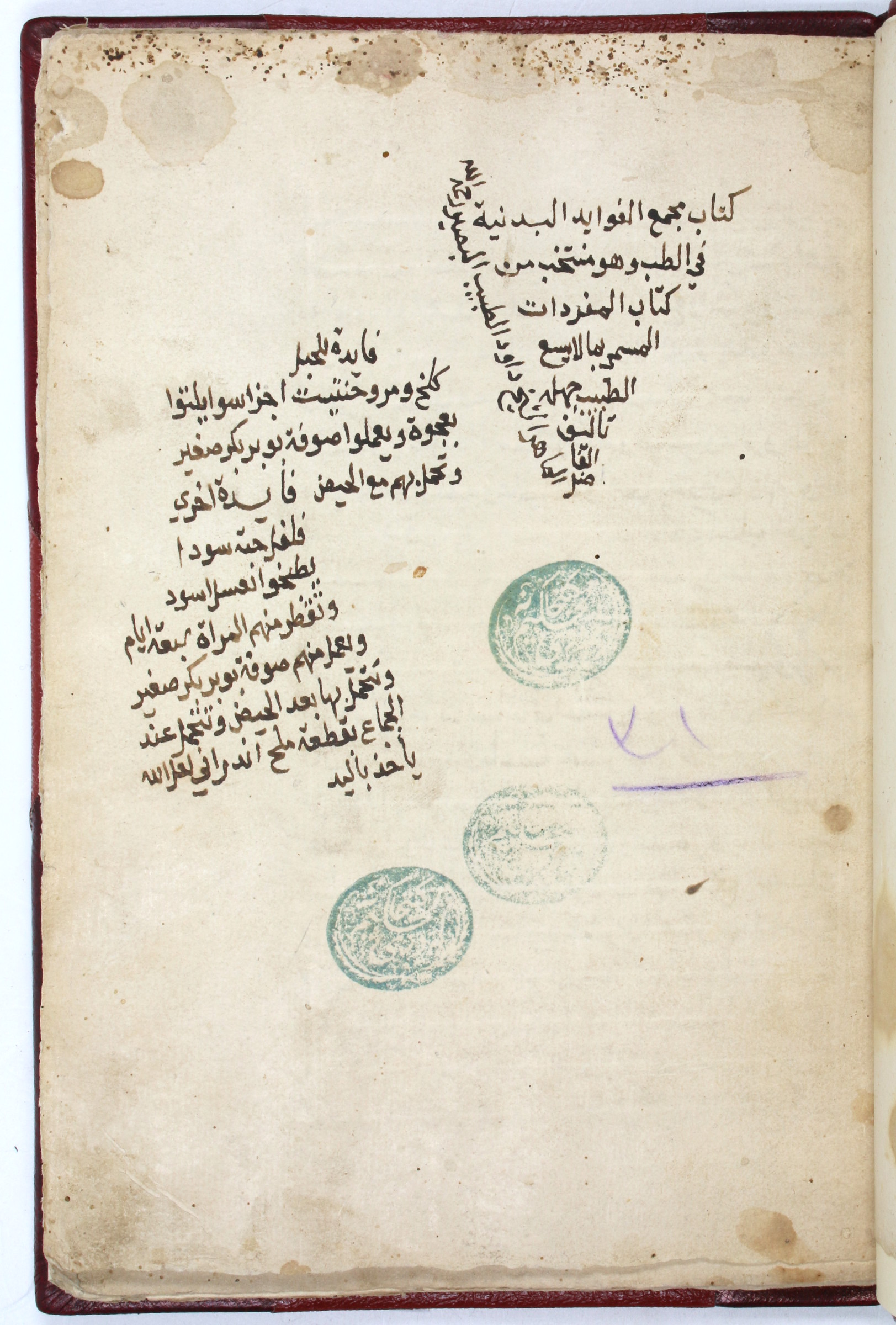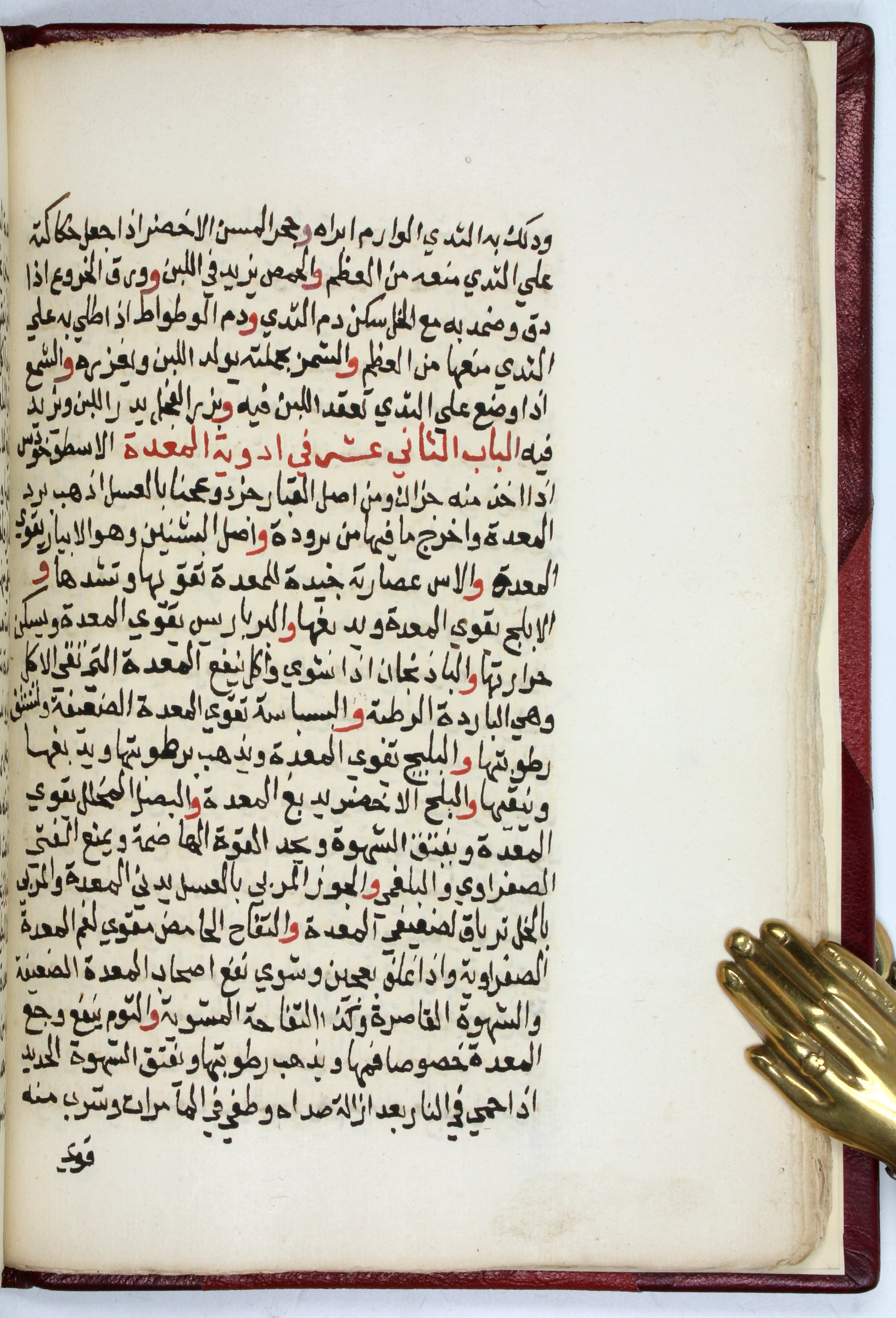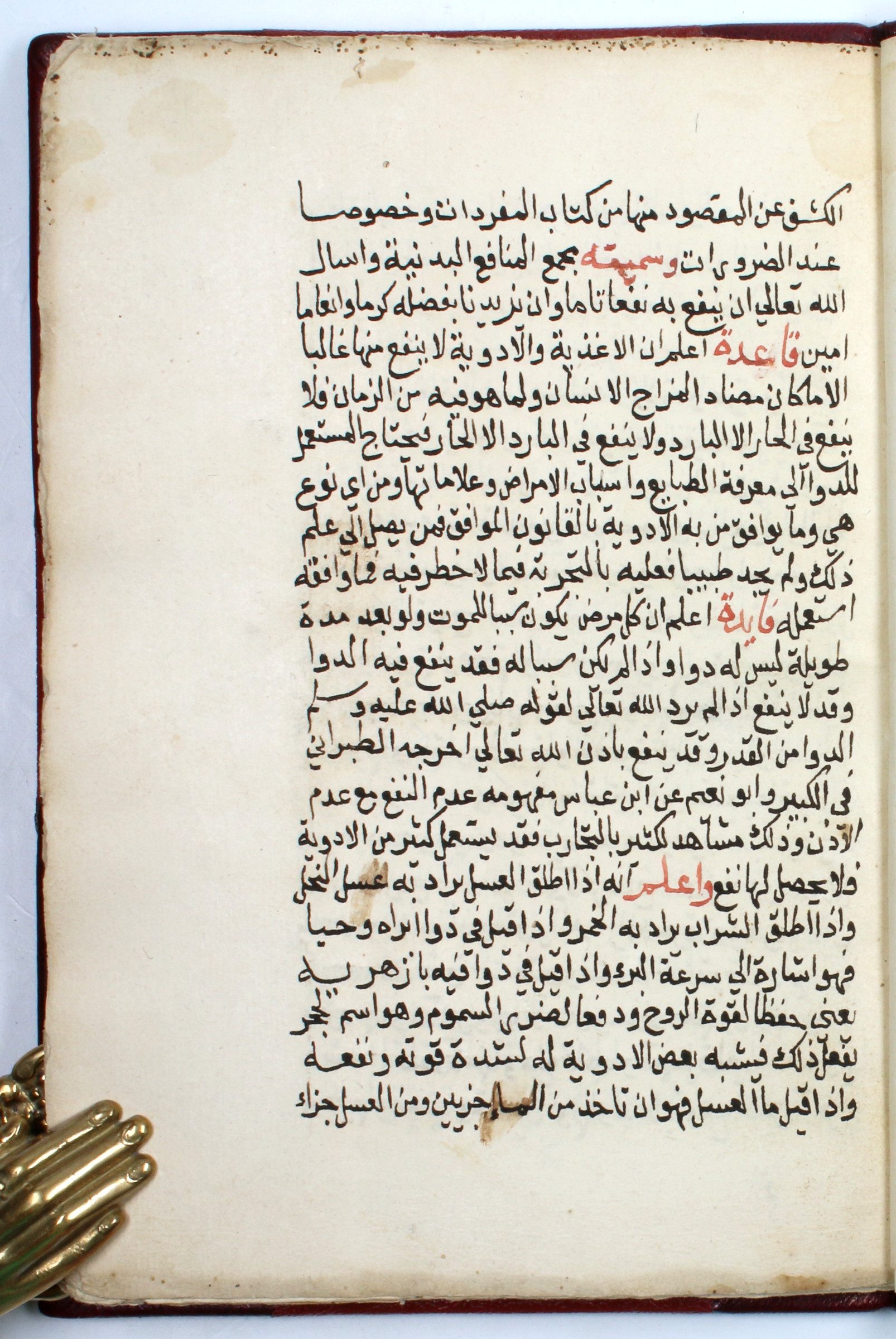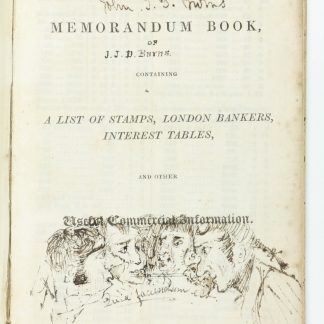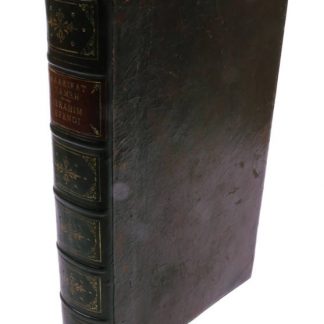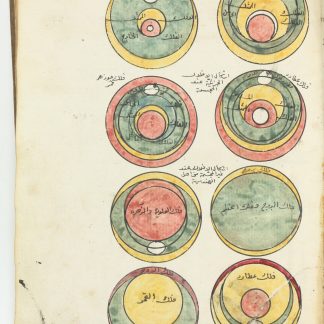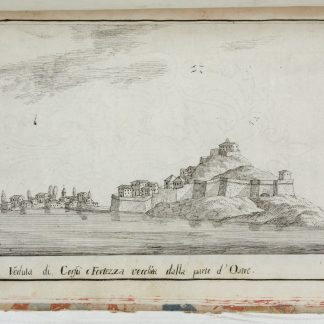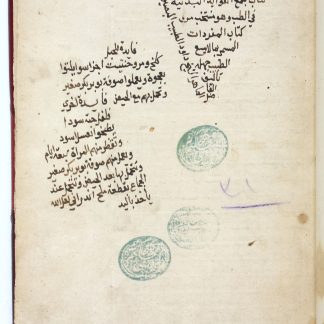Remedies by David of Antioch, sourced across the Muslim world
Majma' al-manafi' al-badaniyah [Compilation of physical benefits].
4to (175 x 254 mm). 52 ff. Arabic manuscript on paper. Black naskh script with important words and phrases picked out in red. 20th century half red morocco.
€ 9,500.00
A medical manuscript by Dawud al-Antaki (d. 1599 CE), the famous blind medical scholar of Cairo known in English as David of Antioch. Al-Antaki mastered Arabic and Greek, and wrote on medicine, literature, logic and other subjects, becoming one of the foremost physicians of his time. His nisbah indicates that while his fame was made in Cairo and Damascus, he was originally from Antioch in Syria. Al-Antaki is credited with introducing guidelines for the medical industry and its use of drugs: standardizing names of medications, specifying appropriate dosages based on the patient, noting interactions with other foods and drugs, explaining how to use of two or more medications at once, and even including such modern-seeming details like shelf life and substitutions in his works. He is known to have died in Mecca.
Al-Antaki was certainly well-read: within his text are selections from the book "Kitab Ma la yasa'u al-t'abib jahluh" ("That which a physician cannot ignore") by Yusuf ibn Ismail al-Kutubi, a medieval Persian scholar from Khoy and author of medical manuscripts, a treatise on drugs which suggest remedies made from the likes of vinegar and castor oil (made from pressed beans). Al-Kutubi in turn based "That which the physician cannot ignore" on the "Jami' li-mufradat al-adwiyah wa-al-aghdhiyah" by the famous Andalusian physician Ibn al-Bayt'ar. As such, this manuscript is a remarkable example of the way pre-modern Arabic medicine and manuscripts moved across the Persian and Arab worlds, from Iran to Egypt to Spain. A manuscript fragment of this work is kept at Yale.
Minor staining to title page; in very good condition.
GAL II, 364.

